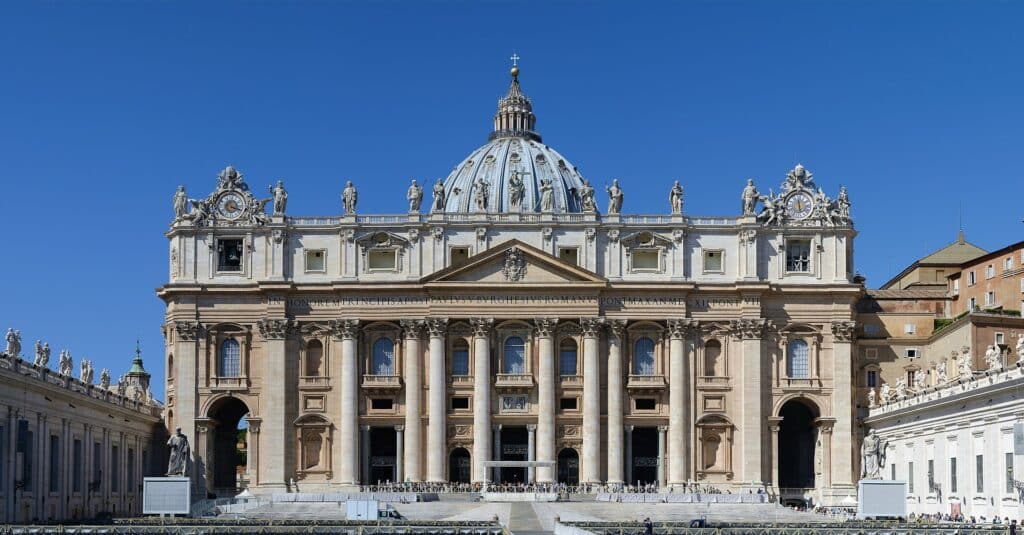

The Orthodox and Catholic Churches have a long history that led to a series of divisions, also known as schisms. However, one of these divisions is not widely known and preceded the one titled ‘Great,’ which took place in 1054.
Imagine a dinner table argument that escalated so quickly that it divided not just the family, but half the world for centuries. That, in essence, was the Photian Schism, a 9th-century theological rivalry between Rome and Constantinople that continues to affect the relationship between the Eastern Orthodox and Roman Catholic Churches. Most of us know the Great Schism of 1054; however, the differences between the Catholic and the Orthodox Churches had begun long before that.
The first schism, also known as the Photian Schism wasn’t just a minor issue; it was a clash of the two powerful seats of Christianity, Rome and Constantinople, fueled by politics, theological interpretations, and good old-fashioned stubbornness that turned the Church into a battlefield.
To truly understand the Photian Schism, we must return to the 9th-century world. The mighty Roman Empire had long since split, leaving the sophisticated Byzantine Empire in the East, with its epicenter in Constantinople, and a more fragmented Western Europe where the Bishop of Rome, the Pope, was increasingly becoming more dominant in the affairs of many places in Central and Western Europe.
In the East, the Byzantine Emperor held considerable power and influence over the Church, being the ultimate authority above all the Patriarchs. Meanwhile, in the West, the Pope, particularly the ambitious Nicholas I, who led the Church in Rome, was actively asserting his authority. He sought to establish his position even above kings, claiming to be the ultimate arbiter of faith and morals. This difference in the Church’s governance—a more collegial approach in the East, involving both religious and secular leadership, versus a top-down structure in the West—was a ticking time bomb with potentially devastating consequences for Christianity’s unity.

As with every argument, personalities matter. On the one hand, we had Photius, a brilliant mind and a scholar who unexpectedly became the Patriarch of Constantinople, and on the other, Nicholas I, the Pope with a firm belief in his own supreme authority over every other religious and secular authority.
Photius, a layman, was catapulted to the highest ecclesiastical office in a mere six days, replacing Patriarch Ignatius—a move perceived as politically motivated by the Byzantine Emperor Michael III. Pope Nicholas, despite past disagreements with Ignatius, refused to recognize Photius and insisted on Ignatius’s reinstatement. This initial disagreement over who held the rightful throne in Constantinople was just the beginning of a much larger power drama.

The initial power struggle soon obtained theological characteristics, with the Filioque clause taking center stage. This seemingly small Latin phrase, meaning “and from the Son,” had been added to the Nicene Creed in the West, stating that the Holy Spirit proceeds from both the Father and the Son.
The original creed, as agreed upon by early Christians, stated that the Holy Spirit proceeds only from the Father. The Eastern Church, with Photius leading it, saw this as an unauthorized and heretical alteration, arguing that the change undermined the original understanding of the Trinity and should not have happened.
Photius then wrote a series of treatises denouncing this Western approach, further widening the theological differences between East and West.
Adding spice to the already tense situation was the battle for the soul (and quite frankly the allegiance) of the newly Christianized Bulgaria. Rome and Constantinople saw Bulgaria as the best battlefield to determine their religious influence in Europe. Khan Boris I, the Bulgarian ruler, played both sides, initially seeking a patriarch from Constantinople, then turning to the West, and finally back to the East when the Pope didn’t quite meet his demands. The back-and-forth makes it evident that the schism wasn’t solely about niche theological debates. It was also about good old-fashioned power and control in Europe.

The escalating conflict reached a boiling point with both Pope Nicholas I and Patriarch Photius not backing down. In 863, Pope Nicholas excommunicated Photius. Not one to back down, Photius, with the support of the Byzantine Emperor in Constantinople, who had chosen him anyway, returned the favor in 867, excommunicating Nicholas. However, Constantinople took a further step: Photius excommunicated the entire Western Church, a bold power-consolidating move.
The immediate excommunications were eventually lifted, but the Photian Schism left a lasting scar, which was a precursor to what happened next.
It deepened the existing tensions and misunderstandings between East and West, with the power struggles and different traditions making the situation worse.
The differing views on papal authority, the Filioque clause, and even seemingly minor things like whether priests should have beards (yes, that was a big thing!) contributed to a growing sense of separation.
Even today, while relations have significantly improved, the Photian Schism reminds us that even within a shared faith, historical events can have long and complex consequences.
